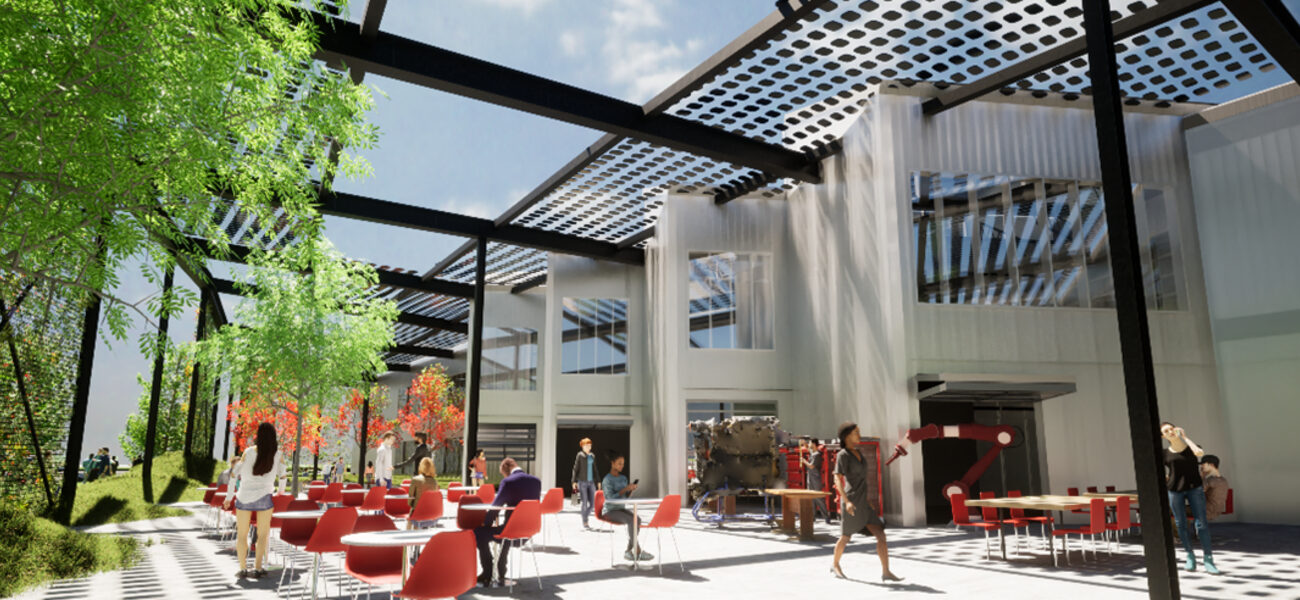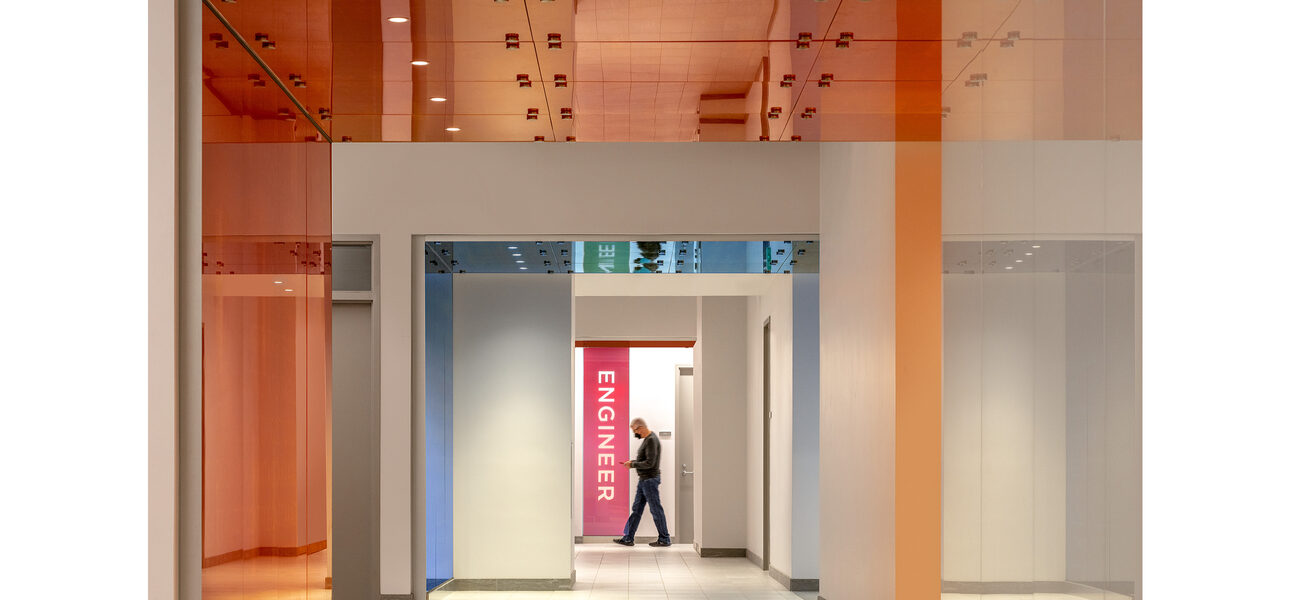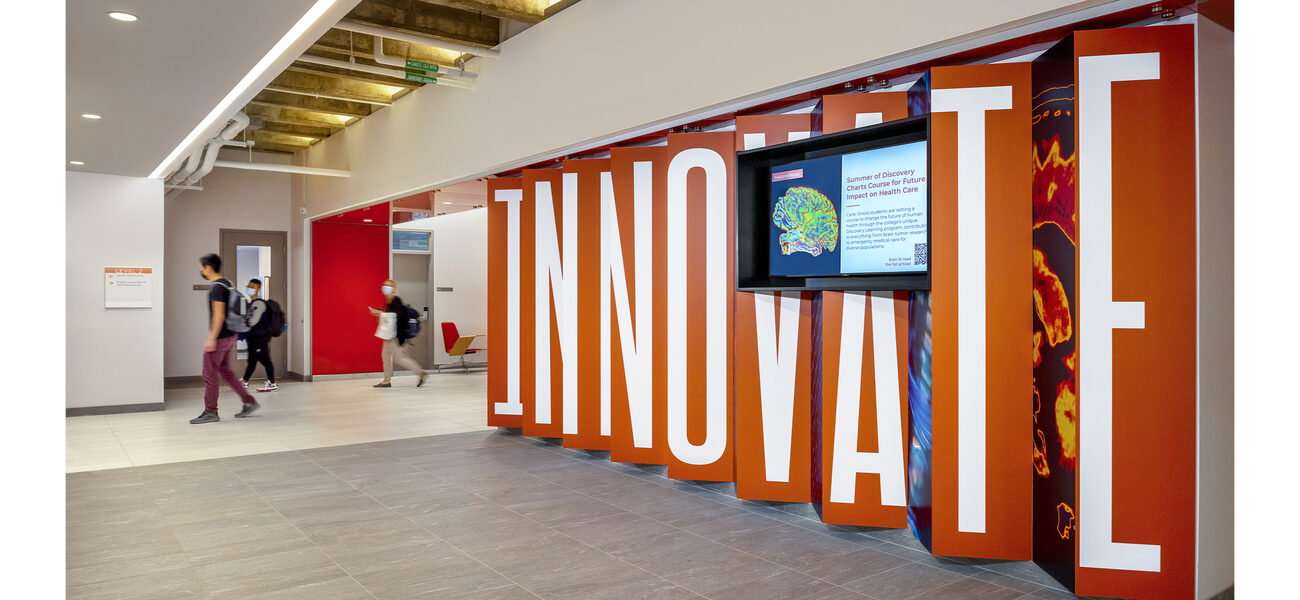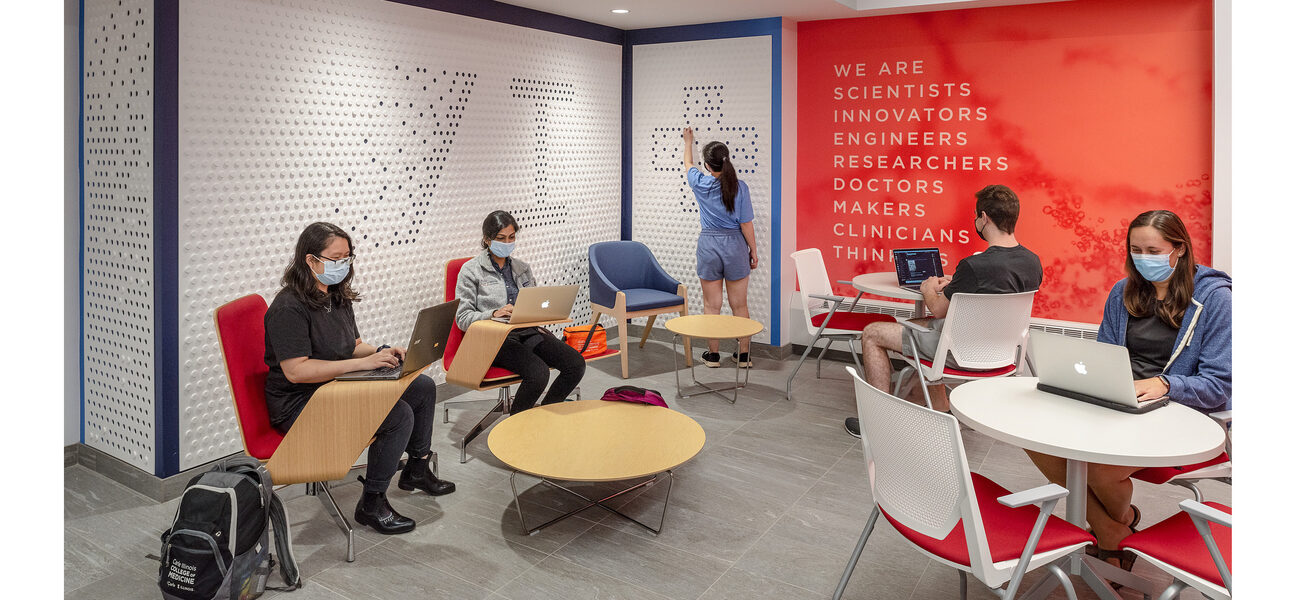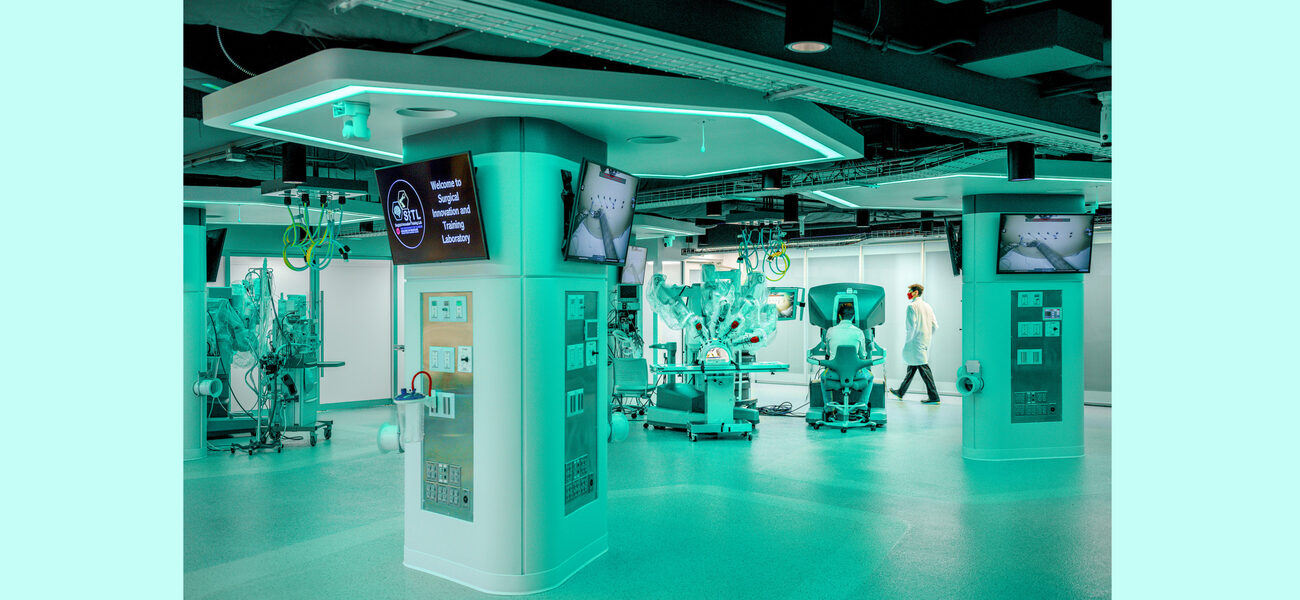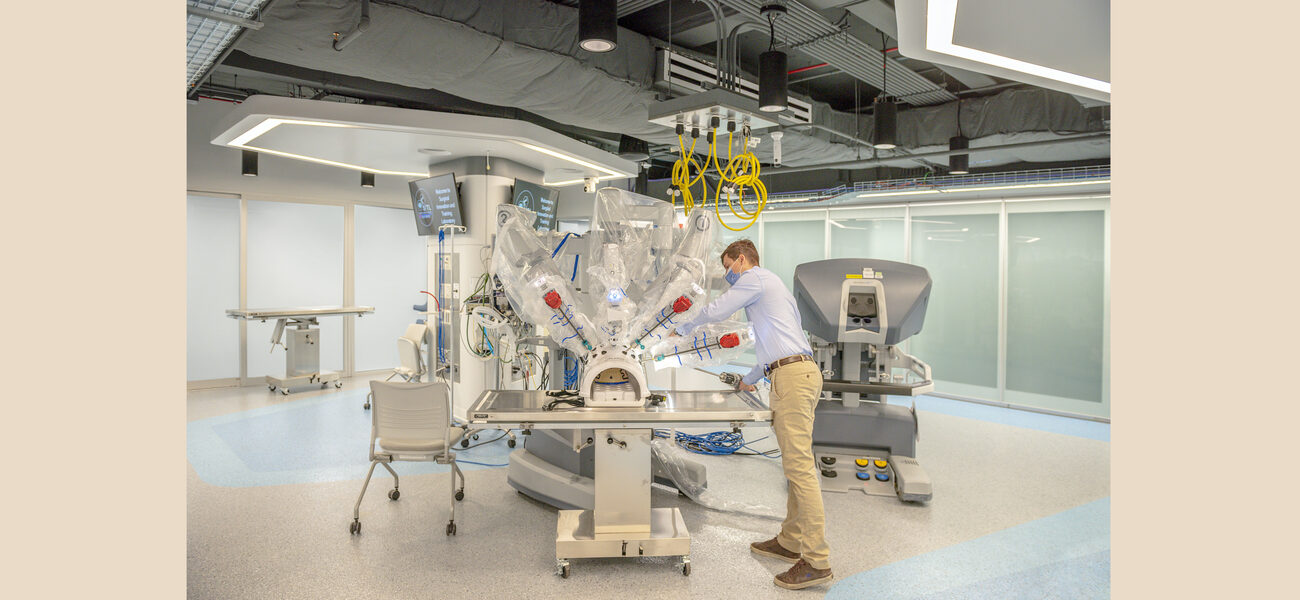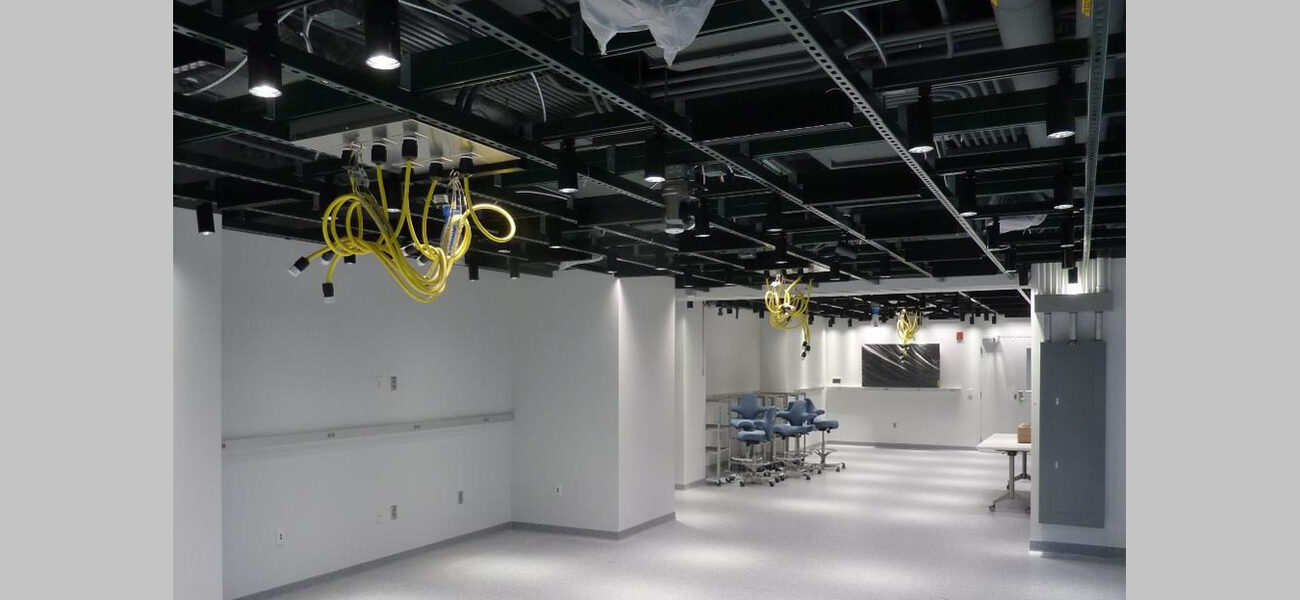Recent initiatives at three Illinois universities illustrate how academic institutions are redefining their facilities and curriculum to support the next evolution of engineering and innovation. These programs—which merge traditional science, engineering, and health disciplines with new technology interfaces and industry partnerships—are supported by facilities aimed at cultivating the new generation of engineers with highly adaptable, specialized technology labs and collaboration areas that encourage student success and increased graduation rates.
Carle Illinois College of Medicine—Physician-Innovators
The Carle Illinois College of Medicine at the University of Illinois-Urbana Champaign (UIUC), is considered to be the first medical school specifically designed to blend the disciplines of engineering and medicine. In contrast to the traditional medical school student who is focused primarily on patient care, more than 80 percent of the students at Carle have backgrounds in engineering, advanced mathematics, computer science, or other quantitative science disciplines. The new school opened in 2018, and its inaugural class of students graduated in 2022 with 100 percent residency match.
The College of Medicine is a partnership between Carle Health (an Urbana-based system of hospitals and physician groups) and the University of Illinois at Urbana-Champaign, which has an established engineering school consistently ranked among the top 50 programs in the country.
The College of Medicine is located in an existing campus building selected for renovation based on its proximity to the engineering school as well as other existing programs that study microbiology, integrative biology, and chemistry.
“One of our main areas of design emphasis at Carle Illinois was to create team spaces where groups of students and researchers would be inspired to collaborate and innovate,” says Trevor Calarco, AIA, LEED AP, senior vice president of science and technology at CannonDesign of Saint Louis, Mo. “Especially in the student gathering and huddle spaces, we turned uninviting spaces into active areas using high-impact graphics along with the necessary access ports and wiring that allow students to use remote conferencing technology to enhance their discussions.”
University of Illinois-Chicago—Radical Surgineers
The Surgical Innovation & Training Laboratory (SITL) at the University of Illinois-Chicago’s College of Medicine opened in August 2020 with the mission of fostering innovation in surgical education and research. The medical school was established in 1913, so this is not a new college but rather an evolution of its program and a transformation of existing facilities to embrace new technologies and education practices. The SITL was designed not only to simulate current surgery practices but to explore the future of “surgineering,” a collaboration between medical device engineers and surgeons to research and develop new surgical techniques.
The centerpiece of the 17,000-sf SITL is the Innovation Lab, which can be staged and reconfigured to adapt to the needs of different training events for any surgical specialty. It has eight modules which can support up to 24 robotic stations simultaneously and can be converted to a cadaver lab when necessary. The lab—equipped with state-of-the-art robotic surgery platforms, advanced surgical simulators, and AR/VR surgical training systems—provides academic training to medical students and residents in the departments of surgery, neurosurgery, and gynecology and obstetrics, and supports the lab’s research initiatives, including collaborations with colleges across campus and industry partners.
“Since innovation in teaching and research continues to evolve, the facility was designed for maximum flexibility and integration of technology to support changing needs,” says Alix Shinewald, AIA, LEED AP, senior vice president of CannonDesign in Chicago. “Overhead garage doors allow for easy movement of equipment on and off the lab floor, and flexible infrastructure, audiovisual, and lighting systems allow users to easily change the lab’s layout and instrumentation.”
The facility also includes a variety of seminar spaces outside of the lab that function similarly to surgery observation rooms of the past, including a modular classroom space that seats up to 200. These seminar spaces have completely adaptable audiovisual systems virtually tied to the SITL and to the medical center. In addition to students, the SITL is also used as a training center by medical equipment manufacturers, including Intuitive and Medtronic, which also served as the supplier for the robotic platform used in the SITL.
Illinois State University – Diverse Engineers
Planning for a new College of Engineering began in 2016, says Aondover Tarhule, then vice president of academic affairs and provost, now interim president, of Illinois State University (ISU). It has since received approval from the university’s board and the Illinois State Board of Higher Education and expects to welcome its first cohort of mechanical and electrical engineering students in 2025. The dean of the college and chairs of the departments are on board, and faculty recruitment is underway. ISU’s goal is to eventually grow to include the full array of engineering curriculum.
“Our engineering program is being intentionally designed from the ground up as a model for equity and diversity,” says Tarhule. “In addition to equity, Illinois State University’s aspirations for the new college include student success and work force development.” The goal is for students in the new college to achieve graduation rates comparable to or higher than the university’s average, he says. The curriculum and the facility itself are being designed to align with the 15 best practices for recruiting and retaining underrepresented minorities published by the American Society for Engineering Education (ASEE). This includes offering generous scholarships and building a curriculum which exposes first- and second-year students to industry-specific projects, not just general education classes, a strategy that has proven successful in retaining engineering students and increasing overall graduation rates.
“Facility design can factor into DEI (diversity, equity, and inclusion) improvements by providing an environment that is welcoming and comforting for the entirety of the student body as well as faculty,” says Calarco. “This includes providing more collaboration spaces used for mentorship and peer-to-peer engagement, and re-evaluating where faculty and students meet outside of the classroom. Rather than always choosing the traditional faculty office with degrees on the wall, there may be more inviting spaces, such as huddle rooms, where students feel more open to expressing ideas or concerns.”
The goal is to admit 130 engineering students each year for the first four years for a total of 520 by year four.
Tarhule explains that faculty within existing general education initially were concerned that all funding for new faculty positions would go to the new engineering school, and that current faculty would not be able to handle increased enrollment, since the engineering students will also be required to take gen-ed classes. The university promised that all new engineering faculty positions would be supported by new dollars rather than reallocating existing funding. Additionally, new faculty for gen-ed classes will be hired to support the larger number of engineering students required to take these courses.
For the first several years, Illinois State plans to use funds from their strong reserves to support the new investment in engineering. After that, revenue from the tuition of the new engineering students is expected to fund the program.
“While these three projects have different parameters, they share the similar goal of creating new academic facilities that are flexible enough to adapt easily to new technologies or new teaching goals,” says Calarco. “There are no out-of-the-box solutions when it comes to designing for universities, since each institution comes with its unique history and mission, and facility parameters that need to be considered on a case-by-case basis.”
Calarco concludes that despite the differences among academic facilities, a few similarities should be applied to all projects, including leveraging existing campus resources; seeking convergences for space, programs, and partnerships; and realizing that any new adaptive environment must support the seamless integration of people, technology, data, and instrumentation.
By Amy Cammell
